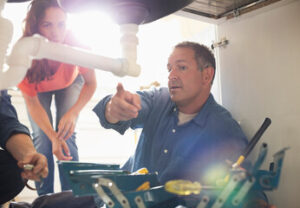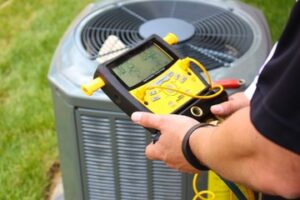The cost of siding is based on the type and size of home, as well as your choice of material. Premium options like stucco, metal, and wood are often more expensive than vinyl or fiber cement.

The weather also plays a significant role in the length of time it takes to complete the project. Rain or snow slows outdoor construction, while extreme heat can lead to worker fatigue. Contact Siding Installation Murfreesboro TN for professional help.
When planning to replace your home’s siding, you need to consider several factors that can influence the total cost. These include the type of siding you choose, material costs, and installation fees. In addition, you should factor in any applicable taxes or fees. These can add up quickly, so it is important to understand the overall cost of your project before committing to any project.
Siding costs can vary significantly from one type to the next, so it’s essential to compare prices before choosing a product. The type of siding you choose can also affect the price, since some materials are more durable and require less maintenance than others. Additionally, some materials are better suited for different climates than others, so be sure to research the options available.
Regardless of the type of siding you choose, it’s essential to ensure proper installation. This will help ensure that your new siding will last for years to come and that it will provide the protection you need from the elements. If you’re considering a DIY installation, it’s important to consider your comfort level with handling tools and working on scaffolding or ladders. This type of project can be dangerous if done improperly.
If you are replacing siding on a two-story house, the first step is to calculate the square footage of each wall. This can be done by summing the length of each wall and multiplying it by the height of the house. For a more precise estimate, you should include the surface area of any architectural features like gables or dormers, as these can affect your sizing calculations.
Once you have a clear understanding of the square footage of your house, you can determine the number of panels and trim that will be needed to complete your project. If you’re replacing windows or doors, you should include them in your sizing estimates as well. This will help you avoid any surprises when it comes to ordering your materials. Lastly, be sure to include the cost of any additional insulation that may be required to achieve your desired results.
Material
When siding a home or commercial building, the material used to cover the structure is vitally important. The right material will provide protection from harsh weather conditions, lock in heat and cold, and enhance its aesthetics. Today’s siding materials are designed to withstand the extremes of temperature and climate without fading, cracking, or deteriorating. The right choice can also boost its resale value and increase energy savings.
Before you start the project, take into account the configuration of your house and the number of windows, doors, dormers, and other architectural features that will need to be sided. This will determine the amount of siding you will need to order and will have a significant impact on the cost. In addition, the type of siding you choose will play a role in its installation and maintenance costs.
Some of the most popular choices include vinyl, fiber cement, and natural wood. Each has its own advantages and disadvantages, but a professional siding contractor will be able to guide you in selecting the material that is best for your climate and home design.
For a vinyl project, you will need a utility knife or scoring tool for trimming and cutting the material. You can also use a power saw for larger pieces. If you are using a power saw, remember to wear safety glasses and work within your limits. Alternatively, you can use tin snips to cut and shape the siding. If you are using tin snips, avoid closing the blades completely at the end of each stroke for a neater, cleaner cut. For projects that require a lot of trimming, you can use a compound aviation-type snip. It’s also a good idea to have a nail hole slot punch on hand, which is used to elongate the hem slots in the siding panels for nailing.
When installing the siding, ensure that there is adequate clearance between it and other surfaces, such as roofing, roofing trim, and windows. This will prevent water damage, pest infestation, and other issues. In addition, you should make sure that the flashing and caulking are properly installed to keep moisture and air out of the walls.
Design
Homeowners should be aware of the design and installation aspects involved in a siding project. This will help them budget for the project and avoid any surprises down the line. It is also important to understand that siding installations should only be performed by a professional installer. Poorly-installed siding can lead to water infiltration and moisture problems that damage drywall, trim, and other structural components. In addition, ill-fitting siding can make a house look shabby and give off the impression that it is not well-maintained.
The cost of a new siding installation will depend on the size of the house and the type of material used. Generally, the larger the house, the more expensive it will be to install. The square footage of the house will determine the number of materials and labor hours required for a complete installation. It is also important to consider the weather conditions where you live, as these will dictate the types of materials that are available and the installation costs.
When choosing the type of siding to be installed, homeowners should select a style that fits with the architecture of the house. For example, board-and-batten siding complements farmhouses and clapboard suits old houses. Moreover, the color of the siding should be chosen carefully, as it will affect the overall appearance of the home. It is also a good idea to consult a professional for advice regarding the best type of siding for your home.
Siding is available in a variety of designs and colors, and some styles are designed to be energy-efficient. This can lower utility bills and reduce the load on the heating and cooling system. In addition to the financial benefits, new siding can improve a home’s appearance and make it more attractive to potential buyers.
In some areas, there are additional costs associated with installing siding, such as permit fees and disposal charges. It is also a good idea to keep all receipts and documentation from the project for tax purposes. Improvements to a primary residence are typically considered capital improvements, which may be deducted from your taxable income. However, it is advisable to discuss the cost of your siding project with your tax consultant before making any decisions.
Installation
Aside from adding beauty to a home, siding provides important protective layers against weather damage, pests, and energy loss. In order to ensure the quality of a siding installation, it is best to hire professionals rather than trying to do it yourself. While DIY installations may save money, shoddy work and low-quality materials can lead to expensive repair and replacement costs in the future. Professionals also have the knowledge and experience to complete the job quickly and efficiently.
Siding installation is a complex process that involves numerous steps. First, the contractor will strip the existing siding and install a base layer of oriented-strand board, or OSB. This material is similar to plywood and helps protect the frame from water, wind, and insect penetration. It is important to use OSB that is pre-treated to resist moisture, as untreated wood can lead to mold and insect infestations. Next, the installer will apply a water-resistant barrier to help protect the wood from damage. This barrier can be applied to the entire house or specific areas, depending on your needs.
Once the waterproof barrier is in place, the installer will add a shingle over the top to protect the underlying OSB and shingles from sun and rain damage. The installer will then install a gutter and fascia if needed, as well as any corner posts or other trim pieces that are required. Once these are in place, the installer can begin installing the vinyl panels. It is important to leave a quarter inch gap between the bottom of each panel and the gable or window trim. When working on a corner, a special tool is used to punch out raised notches that snap into the trim. This eliminates the need for nails, which could damage the siding panel over time.
Before starting the installation process, it is important to have the necessary tools and prepare the work area. This includes removing any items that are in the way of the siding installation, such as downspouts and light fixtures. It is also a good idea to keep children and pets inside during the installation process, as it can be very noisy.



